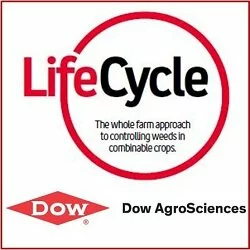Rain Stops Play
I had hoped that by the time I had come to write my second blog that I would be reporting that our Miscanthus harvest would all be tucked up safely in the sheds, job jobbed for another 12 months. But of course this is agriculture and rarely do things go that smoothly.
All that can be cut is cut, there are still some patches on the peat grown that are too wet for the cutters to venture into. These areas will be left uncut, the rhizome will put up new shoots; as they start to come through they will grow up amongst last year’s cane.
The more pressing issue is that we still have 60 hectares on the floor in the swath, the rest has been baled and just needs to be chased in. Unfortunately the heavy rainfall we had over the Easter weekend and the following week means that a) the crop that is in the swath needs a couple more weeks to dry again and b) the outside of the bales need to dry off before they can come in. At this point it would be great if it was like straw, in that, although not ideal if the opportunity is missed for baling, it can have the luxury of time to dry out.
Miscanthus is not replanted on a yearly basis, it’s the agricultural equivalent of a ‘fit and forget’ crop, it’s planted once in spring using specialist planters to position the rhizome (which I always feel resembles a scaly chicken leg!) just below the soil surface. For the first couple of seasons it is just topped and will produce a commercially viable cut in its third season and continue to be productive for 20 years. The challenge it presents currently, is that while the canes sit in the swath next year’s crop is starting to push up new stems which of course means that every tractor movement over it is potentially damaging to next year’s yield. There is also the potential for damage from any late frost which are not unusual here, in the past we have had frost on the 12th June and still had a crop.
Once the bales have been chased and before the stems start to shoot, is the time to complete any spraying that needs to be done. However, the leaf that falls away from the cane during the winter has not been gathered into the bales, instead it is left on the ground to provide a mulch, which helps to smother weed growth; in fact Miscanthus is known for its ability to reduce black grass infestations.
As an aside to the practicalities of growing biomass, one of the main advantages I am finding of having the stubble fields is that I am now acutely aware of the amount of training I need to put in to my clumber spaniel as I can now see clearly that he is ignoring my whistles and he’s not just lost and trying to find his way out of the fully grown cane!
Follow me on twitter @holmanhelen and find out how long it all takes to dry out.











Add a comment
You must be logged in to post a comment.